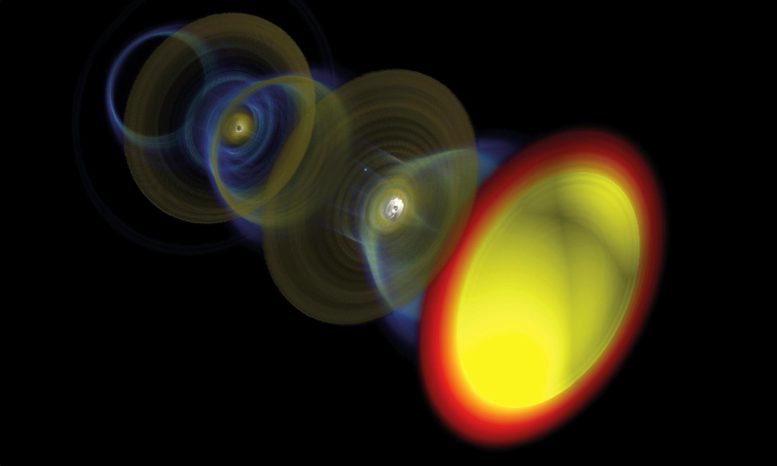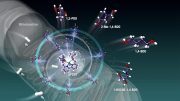
Scientists studied the unique properties of quasiparticles in plasmas by running advanced computer simulations on supercomputers available through the European High-Performance Computing Joint Undertaking. They propose using quasiparticles to create light sources as powerful as the most advanced ones in existence today, but much smaller. Credit: Bernardo Malaca
The seemingly physics-defying properties of quasiparticles could be harnessed for applications ranging from non-destructive imaging to computer-chip manufacturing.
An international team of scientists has embarked on a mission to reshape the foundational principles of radiation physics with the intent of developing super-bright light sources. In a new study published in Nature Photonics, researchers from the Instituto Superior Técnico (IST) in Portugal, the University of Rochester, the University of California, Los Angeles, and Laboratoire d’Optique Appliquée in France proposed ways to use quasiparticles to create light sources as powerful as the most advanced ones in existence today, but much smaller.
The Power of Quasiparticles
Quasiparticles are remarkable entities formed by synchronized movements of multiple electrons. Intriguingly, they can travel at unparalleled speeds, even surpassing the speed of light, and can endure extraordinarily intense forces, akin to those near black holes.
“The most fascinating aspect of quasiparticles is their ability to move in ways that would be disallowed by the laws of physics governing individual particles,” says John Palastro, a senior scientist at the Laboratory for Laser Energetics, an assistant professor in the Department of Mechanical Engineering, and an associate professor at the Institute of Optics.
Advanced Research & Potential Applications
Palastro and his colleagues studied the unique properties of quasiparticles in plasmas by running advanced computer simulations on supercomputers available through the European High-Performance Computing Joint Undertaking. They see promising applications for quasiparticle-based light sources including non-destructive imaging to scan for viruses, understanding biological processes like photosynthesis, manufacturing computer chips, and exploring the behavior of matter in planets and stars.
“The flexibility is enormous,” says Bernardo Malaca, a doctoral student at IST and the study’s primary author. “Even though each electron is performing relatively simple movements, the total radiation from all the electrons can mimic that of a particle moving faster than light or an oscillating particle, even though there isn’t a single electron locally that’s faster than light or an oscillating electron.”
Advantages Over Current Light Sources
Quasiparticle-based light sources could have a distinct advantage over existing forms, like free electron lasers, which are scarce and massive, making them impractical for most laboratories, hospitals, and businesses. With the theory proposed in the study, quasiparticles could produce incredibly bright light with just a tiny distance to travel, potentially sparking widespread scientific and technological advances in labs across the globe.
Reference: “Coherence and superradiance from a plasma-based quasiparticle accelerator” by B. Malaca, M. Pardal, D. Ramsey, J. R. Pierce, K. Weichman, I. A. Andriyash, W. B. Mori, J. P. Palastro, R. A. Fonseca and J. Vieira, 19 October 2023, Nature Photonics.
DOI: 10.1038/s41566-023-01311-z









Be the first to comment on "Harnessing Quasiparticles: The Next Wave of Super-Bright Light Sources"